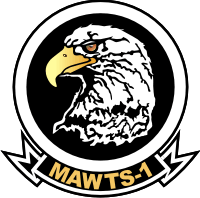Col Paul Boozman and the Creation of MAWTS-1
Col Boozman has had an extensive Marine Corps combat career. With his time in Vietnam, he came out with the conviction that the Marines needed to make a significant commitment to training and preparation for the Marines who also face the certainty of deployment.
As the video which highlights the most recent FINEX for MAWS-1 starts: “It is not really a matter of if the Marine Corps goes it to combat, it is a question of when.”
But now those Marines have the advantage of the training provided through MAWTS-1. Col Boozman and his generation of Marines did not.
Boozman and the founders of MAWTS-1 legacy wanted precisely to carve out a path whereby today’s Marines have a significant training advantage which they did not have.
We had the honor and privilege to talk to Col Boozman and the day of his 90th birthday, November 15, 2023. It was an experience we will never forget, being in the presence of a Marine who made a difference for the generations that followed.
We started the interview by discussing his career and his path to be a founder of MAWTS-1. No wargames here: just learning forged in combat experience.

Col Boozman: “I have always been a Marine Fighter aviator. I got my commission in 1954, finished flight school and then went to Cherry Point where I flew the F-9F-5. in a fighter Training Squadron.
“After fighter training, I was transferred to Japan to begin a career of 20 years which included three tours in Japan and one year in Viet Nam, flying over 200 combat missions. During these years, I flew all models of the FJ, the F3D, F4D, F8U and the F4H Phantom 2(models B,J and N.”
Additional assignments were duties with the 2d Marine Division as Air Liaison Officer and Forward Air Controller which took him to Panama and Turkey for training exercises. During his career he attended the following service schools:
- Forward Air Controller School
- School of Naval Justice
- Marine Corps Communications Officer School
- Armed Forces Staff College
His formal education was a Bachelor of Arts in Mathematics and a Master of Arts in Educational Technology.
His command experience included Commanding Officer, Marine Air Control Squadron 6, Executive Officer Fighter Attack Squadron 323 in Viet Nam, Officer in Charge of the Air Field, Khe Sanh Combat Base, Executive Officer of Air Reserve Training Detachment, Dallas, Executive Officer and Commanding Officer of Marine Aircraft Group, 15 in Japan.
When Boozman then came from MAG-15 in Japan to headquarters Marine Corps where he was attached to the Aviation Department.
Headquarters USMC was reorganized at the time with all training activities were then placed under the control of the Operations and Training staff group. Training activities were divided into ground and into aviation training, with Boozman placed in charge of air training within the Operations and Training Directorate of Headquarters of the USMC.
Boozman laid out in detail how the pilots and Marines generally were making it up as they went along in Vietnam. And there was no standardization whatsoever built into the combat learning process.
He underscored that this experience was seared into him, and he was committed to not having the next generation of Marines to have to suffer from the lack of training which reflected the reality of the combat they would face with the weapons they possessed and the nature of the forces they would work with.
Rather than playing pick-up sticks, why not build a modern training approach which would build comprehensive knowledge standardized across the force?
A commitment to doing this would be the driving force behind Boozman’s and his colleagues focus on what a new training regime needed to look like.
Boozman then organized a group at headquarters to shape ideas for a new way ahead. He insisted on the following: “We are never going to repeat how we fought in Vietnam. We want to make sure that people know what they are doing. We want to come up with a way of training where people know what they are doing when they go into combat.”
Boozman and his team focused on an approach whereby the schoolhouse would train the trainers who would go back into the units, shape standardization at the schoolhouse, take it to the squadrons and then the combat experience would be cycled back into the schoolhouse training and create a continues learning process which shaped the training experiences.
LtGen John Miller signed off on the concept and then they presented the plan to LtGen Tom Miller, who had to supply the personnel to staff MAWTS-1.
According to Boozman: “LtGen Tom Miller was hoping to be able to reduce the number of persons committed to training, but after being briefed on the concept and scope of reorganization of the training program, he approved the personnel requested. That was the original foundation of MAWTS-1.”
And there seemed to be resistance to the idea of the MAWTS concept. The Commandant at the time was General Louis Hugh Wilson, Jr., a World War II recipient of the Medal of Honor and 26th Commandant of the Marine Corps and he gave his full support to the MAWTS proposal and MAWTS was commissioned under the direct supervision of Aviation Training.
At Colonel Boozman’s request, LtCol Howard DeCastro, a key player in the development of the MAWTS concept, was appointed as its first Commanding Officer.
In 1980, after several MAWTS classes, Colonel Boozman. retired from active duty. He was awarded the Legion of Merit Medal for his work in aviation training.

